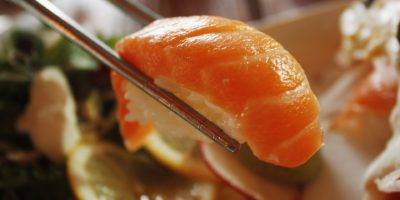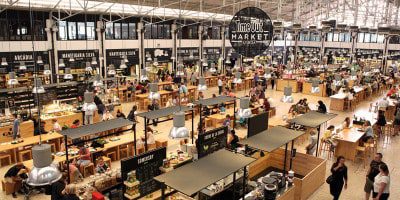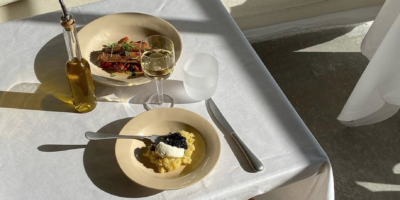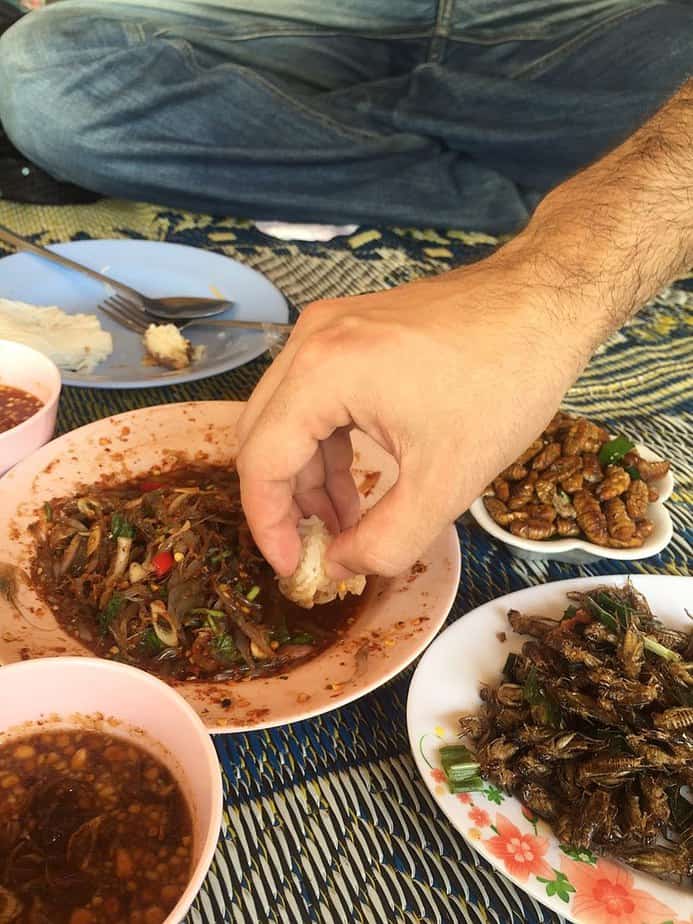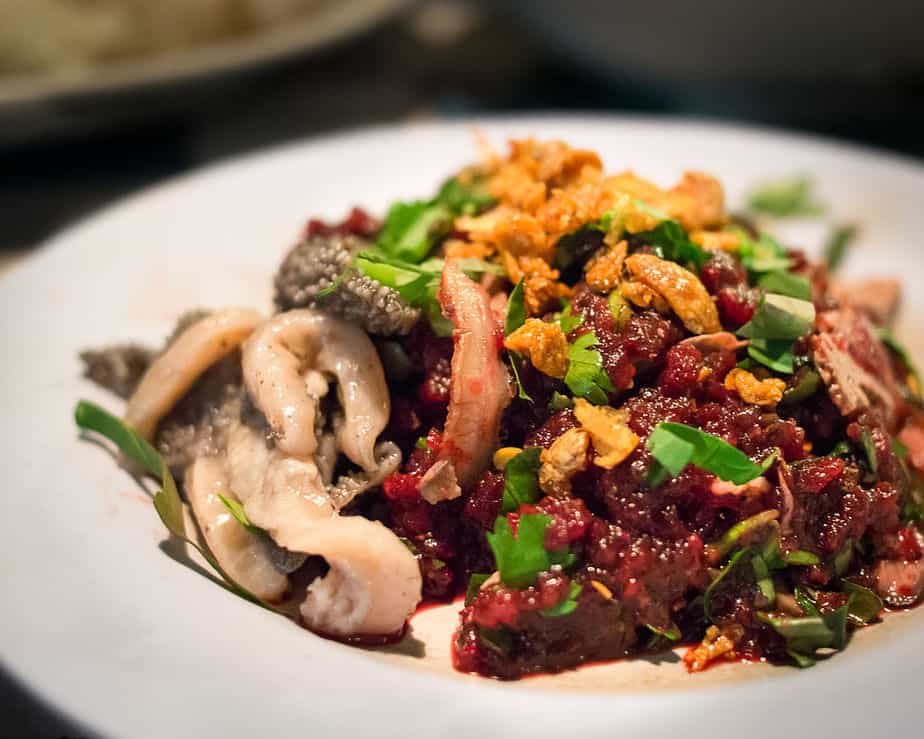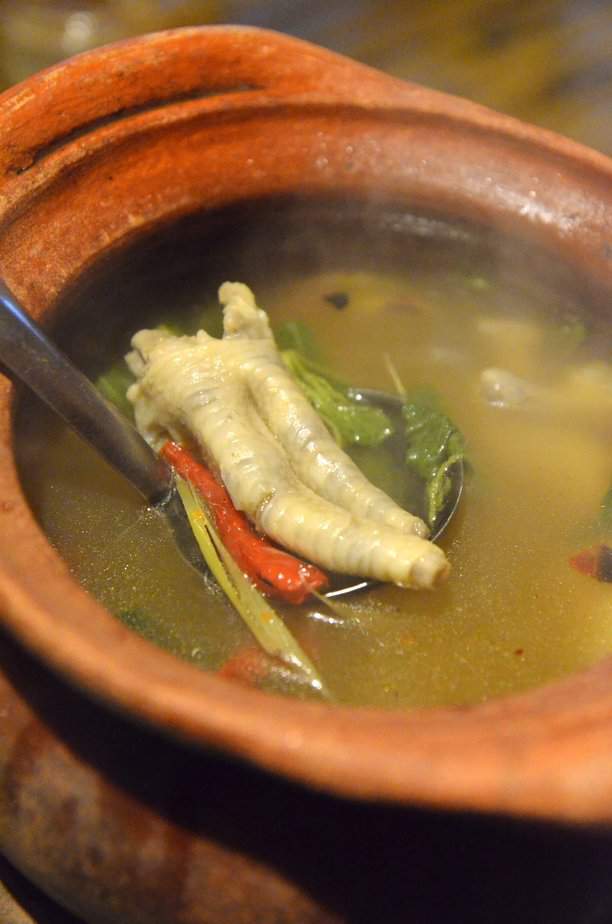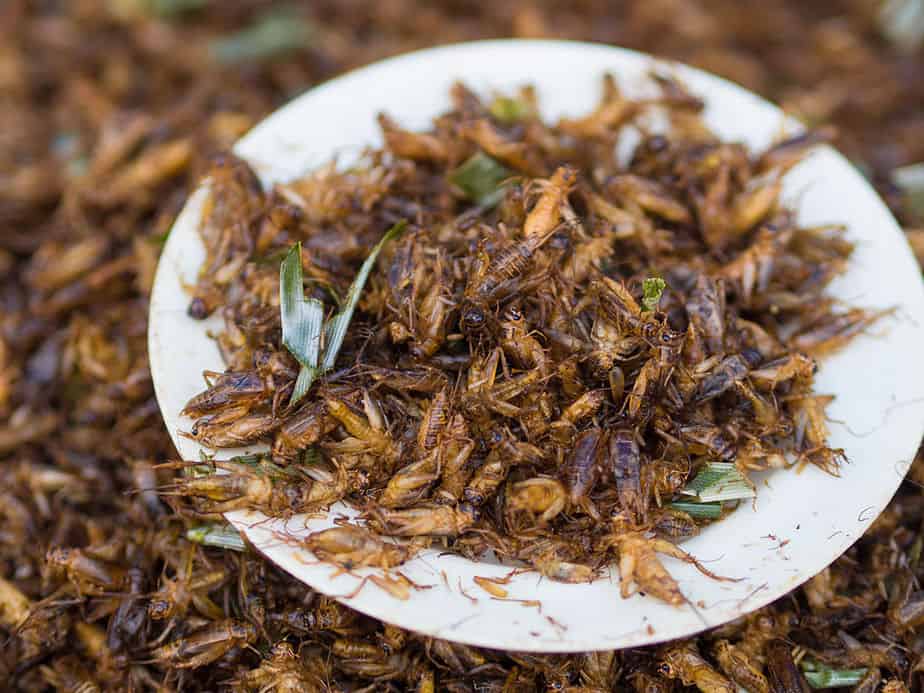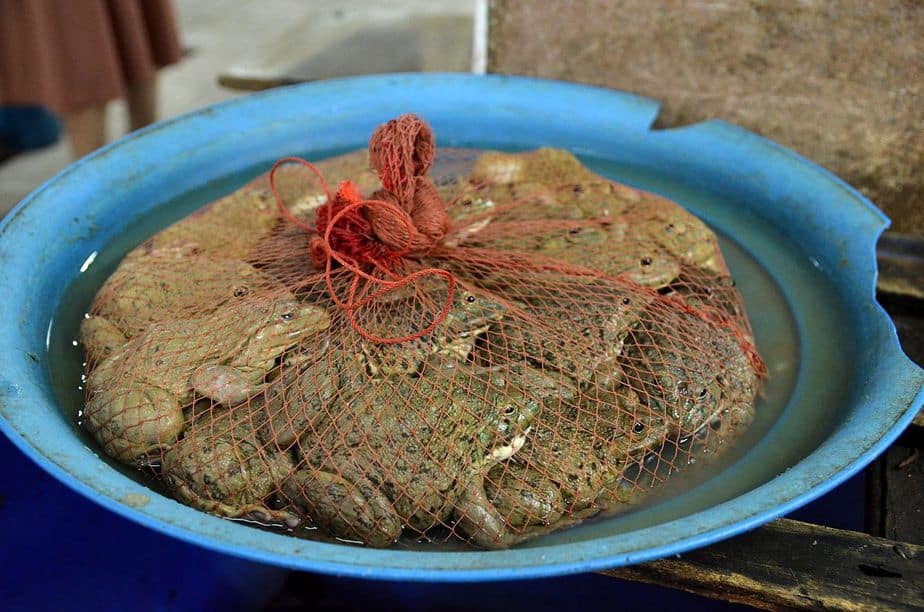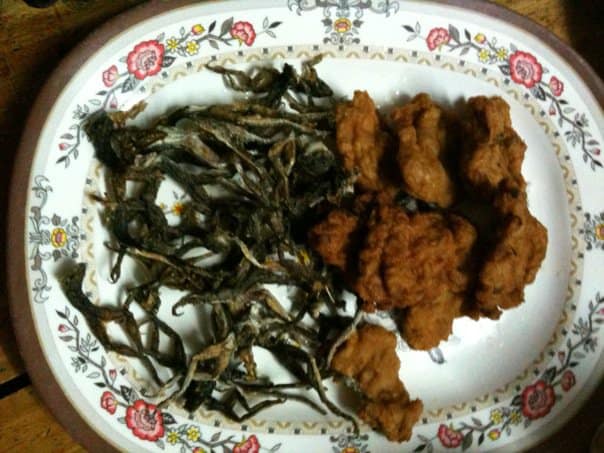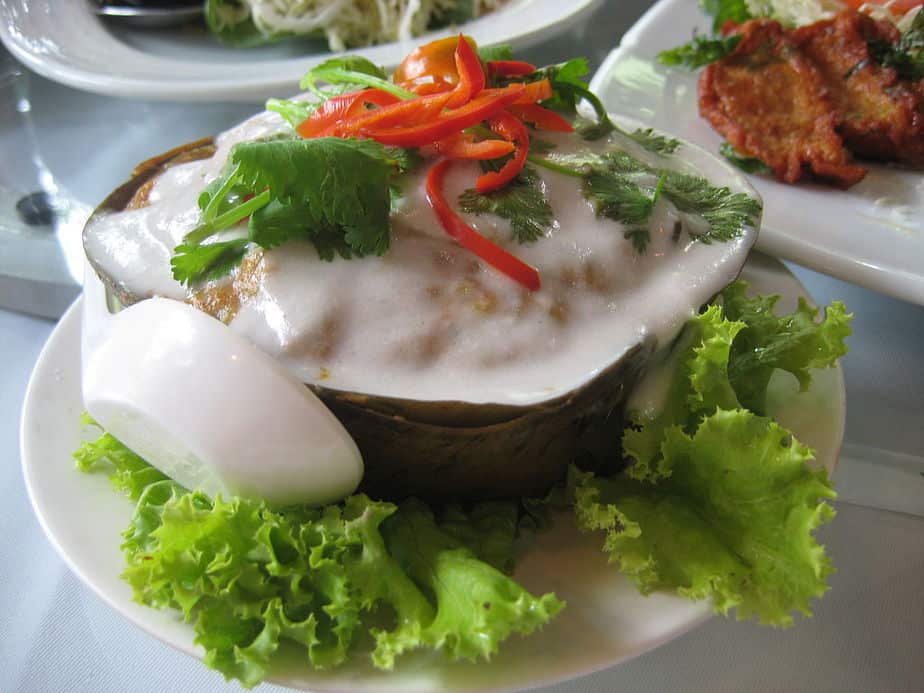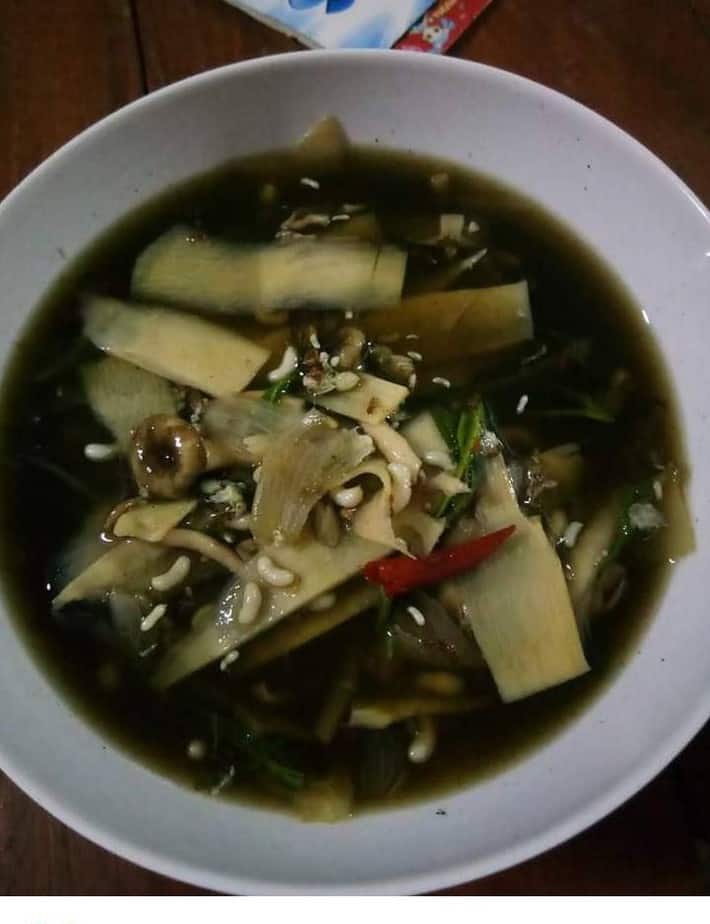Top 10 Most Bizarre Foods Thai People Eat
For most people, the idea of Thai food is likely to conjure up images of exotic, colourful, spicy dishes like the standard Thai green curry (Gaeng Keow Wahn), Penang Red Curry (Gaeng Penang), Papaya Salad (Somtum), or maybe the well-loved barbecued chicken and sticky rice (Gai Yang Khao Neow), to name but a few.
However, as is the case in pretty much any country, there are what might be considered the standard dishes of the nation (that most people from other countries with adventurous taste buds are likely to have encountered), and then there are the more ‘local’ variations which often vary distinctly between regions.
Thailand is no different on that score, and in typically SE Asian fashion, many of the foods that are eaten or used to form the main part of some dishes in the country may cause some degree of alarm or surprise, even for those considering themselves of the more open-minded persuasion in terms of culinary tastes.
One of the main points to consider whilst reading this guide though is that most of the items listed are not exactly what you are likely to find in what might be described as a ‘standard’ Thai restaurant (although that doesn’t mean that you couldn’t get them on request as most of the ingredients are widely available in the country).
They are typically ‘regional’ in variation, meaning that someone in the south of the country isn’t likely to have the same ideas about what constitutes a culinary delight as someone from the northeast. That said, all of the items on this list are available to some extent in the capital of Bangkok, but obviously not to the same degree as the more standard fayre.
So — for those considering themselves ‘seasoned’ travellers, or seekers of unusual culinary delights, and anyone who believes themselves to be open-minded when it comes to what constitutes ‘real’ food or not … here goes ‘The Top Ten Most Bizarre Thai Foods’. Enjoy!
1. ‘Goong Den’ (Dancing Shrimp)
The first thing to consider with this culinary delight is that ‘Den’ is actually the shortened, Thai pronunciation from the English word ‘dance’. Goong being the Thai word for shrimp, what we have here then is a shrimp that ‘dances’.
Not to be taken too literally, this descriptive term comes from the fact the small shrimp – which is of course wholly alive – after having been dipped in a particularly spicy sauce and then placed on the tongue, proceeds to ‘dance’ before being chewed and swallowed (or just swallowed).
The shrimps are quite small and usually need to be covered as once they get anywhere close to the sauce, which usually contains varying degrees of chilli and lime amongst other things, will start to jump around wildly (wouldn’t you?).
In fact, if being served in a restaurant, the cook may usually give them a little spray of what is to come, just to ensure that they are lively enough to qualify for the term Goong Den once they hit your table. Something of an acquired taste, and possibly not for the squeamish.
2. Laab Leuad Neua (Raw Beef with Uncooked Blood)
If the first item on our list had you considering the possibility of becoming vegan, then the second one will possibly push you even closer to the edge. This one puts the classic ‘Steak Tartare’ to shame, being largely about raw meat and blood (yes, RAW).
The Northern and Northeastern favourite ‘laab’ dish comes in many varieties. This is a very spicy dish, usually containing some form of finely chopped meat or fish, and mostly eaten with sticky rice.
However, with no apparent fear of bacteria, parasites or any other unwelcome toxins that may be present in the meat, the people of the Isaan region of Thailand, along with some in the north, are quite happy to tuck into this particular dish without any prior hint of a flame or any other kind of heat. (Apparently, a case of ‘what doesn’t kill you makes you stronger’.)
Not only is the meat itself uncooked, but it is actually served with blood (again uncooked) as the ‘sauce’ of the dish, mopped up by handfuls of sticky rice. And, if you think the idea of eating this bizarre Thai food sounds hardcore, well…there are even stories of some people eating this dish made with pork or chicken (– if that is indeed possible without severe health issues or even death?).
3. Super Teen Gai (Chicken Feet Soup)
Soup made with chicken feet – guaranteed to make you run faster, apparently (!). Chicken feet are not everyone’s cup of tea in Thailand, but they are still quite popular and do feature in a lot of the dishes of which chicken is already a key component (you may even find the occasional foot or two in your chicken green curry if it is enjoyed locally.)
Chicken feet are not exactly that easy to eat or chew if you are considering trying them, even when they are boiled and made into a soup of which they are the main feature. (Apparently, though they are a good source of collagen.) The soup itself tends to be fairly plain by Thai standards, being similar to some of the clear soup served with steamed chicken and rice or noodle dishes of the Chinese-influenced variety, although it can just as well be the popular tom yum variety.
4. Toot Gai (Chicken Rear End)
The polite word ‘rear end’ has been used here for this particularly bizarre-sounding Thai food item, although it does actually translate in Thai as chicken bum! For any lovers of, or those familiar with the barbecued variety of chicken available in Thailand known as Gai Yang, which is commonly found on the smoking stands of many a street vendor, this cut of the chicken is usually sold by the same people.
For anyone familiar with the anatomy of a chicken, it doesn’t exactly have a ‘bum’ as such, but underneath the feathers there is a point (which is pointed) that is considered the end of the chicken.
Although this might be thrown away by many discerning butcher considering its location, for some reason it is chopped off and usually grilled on a skewer by many Thais who believe it to be one of the most delicious cuts of the bird. This may be due to the fact that it is somewhat more oily than other sections, which apparently adds to the taste when it is barbecued.
5. Malaeng Tord (Fried Insects)
Insects are considered as a tasty and nutritious snack in Thailand, and although not everyone eats them, they are widely available from street vendors. There is a large range of different insects that are likely to be eaten as snacks or included in some of the dishes, so just a handful are included here to give a general idea.
Grasshoppers (dukaden) are considered nutritional and high in protein, and so are one of the main insects eaten by some Thais. Like most of the other insects eaten as snacks they are fried, sometimes sweetened, and sold in bags from 20 baht.
Bamboo Worms (Rod Duan) are another common sight on the stands of the insect vendors, which may look a bit like maggots to some people not in the know, but again are a popular snack. Then there are Waterbugs (Ma Daeng) a variety of insect snack that you might be forgiven for mistaking for a cockroach, alongside silkworms (Hon Mai), and in some areas, you may even find even more exotic choices such as scorpions (Mangpong) (!) on some vendors’ carts.
6. Gob (Frog)
Sticking with the ‘if it moves eat it’ adage, or in this case ‘if it leaps or hops’, on some menus and plates in Thailand may be found the humble frog. This particular item of what might be considered ‘bizarre’ Thai food takes the Gaelic frogs’ legs idea a bit further and includes the whole body of the dead frog.
The frog may be chopped and included in one of the more regular Thai dishes or, in some cases, cooked and served whole (sometimes with the skin still on). Again, not a dish preferred by that many city-dwelling Thais, but frogs can still be found on some menus in Bangkok restaurants, even though they are more likely to be caught and eaten out in the provinces by country folk.
7.Hor Mok Luk Odd (Steamed Tadpole Patty)
Following on with the frog theme, next on the list we have ‘Hor Mok Luk Odd’, a dish that is made largely with tadpoles. First, they are ground (along with chili, garlic, lime, shallots or small onions, and coriander) into a paste, then steamed in a banana leaf to make the Hor Mok.
Hor Mok itself is actually a commonly-found food item in Thailand, sometimes made with fish or chicken, but the particular variety featured here may be considered a somewhat more bizarre Thai dish by many.
8. Paak Bpet Tord (Fried Duck Beaks)
This being Asia, every part of an animal is considered usable in some way, shape or form, and this includes even the beaks of some of the birds. Unsurprisingly, this is another Northeastern delicacy and can be found in many of the packed Isaan restaurants operating in the capital city or otherwise.
The duck beaks are surprisingly crunchy and tasty, having been marinated beforehand in soy sauce before being deep-fried, and these are often served as a favourite aperitif, particularly with beer drinkers.
It might be worth noting for anyone intent on trying this bizarre Thai food that care does need to be taken in chewing the duck beak’s properly, as it can still be quite hard and sharp and the shards are not likely to be the kind of thing anyone would wish to have stuck in their throat (!).
9.Gaeng Kai Mot Daeng (Red Ants’Eggs Curry)
This is another NE regional preference, but ants’ eggs are actually used for a variety of culinary pursuits. The ants themselves (usually the large, red, aggressive variety that are plentiful in the tropics) are considered to add a citrus twist to many dishes.
It is, therefore, a familiar sight in the Isaan region and some others, to find young children climbing the trees and shaking the branches down in order to collect the day’s condiments.
The eggs are somewhat more difficult to find (and possibly more hazardous), and so are considered slightly more of a delicacy. Once found, they may then be added to a laab, a yum (salad) or some kind of gaeng (which loosely translates as a kind of soup or curry).
The dish featured here, which for some may qualify as bizarre in terms of food, is a gaeng made with the ants’ eggs and bamboo (nommai), spiced and seasoned with a few other local herbs and spices.
10. Tom Yum Ngoo (Snake Soup)
This particular dish pertains to the myth that the ancient Siamese used to eat snake, a fact denied by many modern-day, city-dwelling Thais. However, the snake is indeed eaten – although again probably mostly out in the countryside – albeit to a lesser degree than most of the other bizarre Thai dishes included on this list (which is why we saved it until last).
For country folk out in the wilds, food hasn’t always been in such plentiful supply as it may have been for their city-dwelling cousins. With that in mind, they have obviously developed a much broader expanse in terms of what is likely to be on the menu. Everyone has heard that some people in Asia eat dogs (they do indeed – but we won’t go into that just now), but snakes? Surely this is the stuff of legend or some bizarre Chinese secret eating club…(?)
There is actually a huge variety of snakes running around the wilds of Thailand, many of them dangerous although the majority not so much. Along with many small rodents, and as we have seen insects and amphibians, the ‘if it moves eat it’ is still very much a part of life for many country people.
Snakes, being not that difficult to catch for a seasoned rice farmer, are usually boiled up, skinned, chopped, and added to some form of soup or gaeng like the typically Thai ‘Tom Yum’.
Planning a trip to Paris ? Get ready !
These are Amazon’s best-selling travel products that you may need for coming to Paris.
Bookstore
- The best travel book : Rick Steves – Paris 2023 – Learn more here
- Fodor’s Paris 2024 – Learn more here
Travel Gear
- Venture Pal Lightweight Backpack – Learn more here
- Samsonite Winfield 2 28″ Luggage – Learn more here
- Swig Savvy’s Stainless Steel Insulated Water Bottle – Learn more here
Check Amazon’s best-seller list for the most popular travel accessories. We sometimes read this list just to find out what new travel products people are buying.


